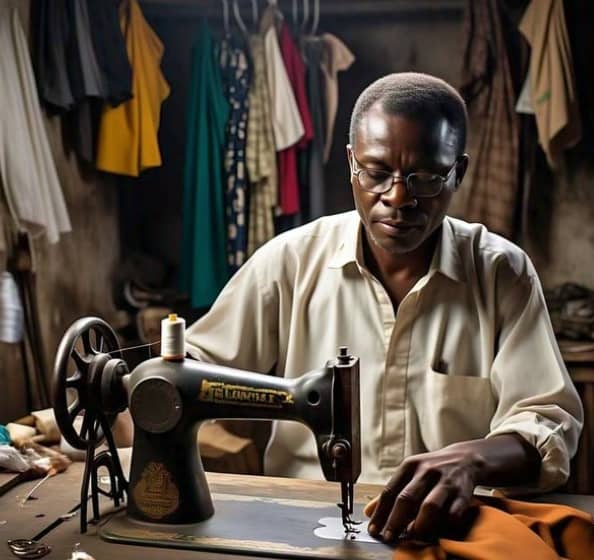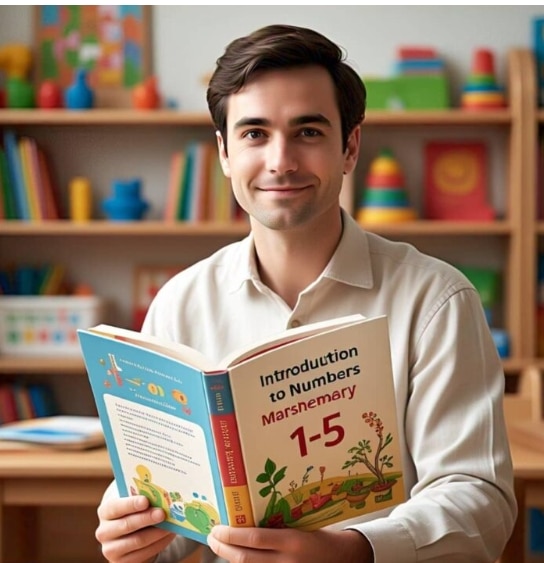Musical Instruments
Vocational Aptitude – Primary 1 First Term Lesson Notes
Week 5
Exploring Musical Instruments and Their Sounds
Subject: Vocational Aptitude
Class: Primary 1
Term: First Term
Week: 5
Age Range: 5–6 years
Duration: 40 minutes
Behavioral Objectives
By the end of this lesson, pupils should be able to:
-
Identify different musical instruments.
-
Describe the sounds produced by various instruments.
-
Recognize some common musical instruments in their community or home.
-
Name at least three musical instruments and the sounds they make.
Key Terms and Definitions
-
Musical Instrument: A tool or device used to create sound in music.
-
Sound: A vibration that travels through the air and can be heard when it reaches the ear.
-
String Instrument: An instrument that produces sound through vibrating strings (e.g., guitar).
-
Wind Instrument: An instrument that produces sound when air is blown through it (e.g., flute, trumpet).
-
Percussion Instrument: An instrument that makes sound when it is hit, shaken, or scraped (e.g., drum, tambourine).
Warm-Up / Set Induction
Teacher (Smiling): “Good morning, Superstars! Have you ever heard music in church, at a party, or at a wedding? Can you think of any instruments that make music?”
Kemi: “I’ve heard drums in church!”
Akin: “And my uncle plays the guitar at family parties!”
Teacher: “Yes! Those are musical instruments. Today, we are going to learn about different types of musical instruments. Some are played by blowing, some by plucking, and some by hitting! Let’s discover more!”
Entry Behavior
Pupils are already familiar with sounds from musical instruments at church, parties, or on TV, but they may not know the names or types of instruments. Some pupils may have family members who play instruments, or they may have seen musicians in the community.
Learning Materials and Resources
-
Pictures of musical instruments (drum, guitar, trumpet, flute, etc.)
-
Small versions of instruments (if available) or toy instruments
-
Audio recordings of sounds produced by different instruments
-
Flashcards with instrument names
-
A real drum or tambourine (if available)
Background Knowledge
In many Nigerian communities, music plays an important role in celebrations, events, and even school activities. Children may have been exposed to music from local musicians or at social gatherings. By relating these experiences, the teacher can make the lesson feel familiar and exciting.
Embedded Core Skills
-
Communication: Pupils will share their ideas and describe instruments and sounds.
-
Critical Thinking: Pupils will compare different instruments and think about how they make their sounds.
-
Observation: Pupils will carefully listen to the sounds of instruments and identify them.
-
Cooperation: Pupils will work together to identify instruments and sounds.
Main Content
What Are Musical Instruments?
A musical instrument is an object used to produce sound. The sound is produced in different ways, depending on the instrument. Some instruments require you to blow air into them, while others require you to strike them or pluck them.
Types of Musical Instruments
-
String Instruments
These instruments make sounds when you pluck or strum the strings. Some of them also produce sound when you rub a bow across the strings.
Example Instruments:
-
Guitar – You strum the strings with your hand or pick to make music.
-
Violin – A small string instrument played with a bow.
-
Harp – Large, with many strings, and you pluck the strings to make beautiful sounds.
How They Sound:
The guitar produces a smooth, sometimes twangy sound, depending on how you strum it. The violin has a high, sweet sound, while the harp creates a magical, peaceful sound when its strings are plucked.
-
Wind Instruments
These instruments make sound when you blow air into them. Some instruments have reeds, and some are open-ended.
Example Instruments:
-
Flute – A long tube that you blow into to produce soft, gentle music.
-
Trumpet – A shiny instrument that makes loud, clear sounds when air is blown into it.
-
Saxophone – A wind instrument made of metal, playing smooth, jazzy sounds.
How They Sound:
The flute has a soft, sweet sound, the trumpet produces loud and bright sounds, and the saxophone creates smooth, jazzy sounds that make you want to dance!
-
Percussion Instruments
These are instruments that make sound when hit, shaken, or scraped.
Example Instruments:
-
Drum – You hit it with your hands or sticks.
-
Tambourine – A small, round instrument with jingles that you shake or tap.
-
Xylophone – A wooden instrument with bars you strike with a mallet.
How They Sound:
The drum makes deep, booming sounds. The tambourine makes a jingling, rattling sound when shaken. The xylophone makes a series of pleasant, melodic sounds when you hit its bars.
-
Electronic Instruments
These instruments are powered by electricity and produce sounds electronically.
Example Instruments:
-
Keyboard – A piano-like instrument that can play different sounds when you press the keys.
-
Electric Guitar – A guitar connected to an amplifier to make loud, powerful music.
-
Drum Machine – An electronic device that plays pre-recorded drum beats.
How They Sound:
The keyboard can play any sound from a piano to a trumpet, depending on the settings. The electric guitar produces loud, sharp, and powerful music. The drum machine plays rhythmic beats, just like a drummer would.
Classroom Story: The Musical Party
One sunny afternoon in Lagos, the children at school were excited because it was the day of the big musical party. The school had invited several musicians to come and show their instruments to the children.
When the musicians arrived, they brought with them many musical instruments.
The first was Tunde, the saxophonist. He played a smooth jazz tune that made everyone want to sway and clap along!
Next was Amara, the drummer. She played her drum loudly, making the whole room shake with the deep, powerful beats.
Finally, Olamide, the guitarist, strummed his guitar and sang a beautiful song that made everyone smile.
The children had so much fun listening to the different instruments, and they were amazed at how each one made a unique sound.
Class Discussion with Pupils’ Contributions
Teacher: “Now, children, what instrument did Tunde play?”
Chidera: “He played the saxophone! It made a sweet sound!”
Teacher: “That’s right, Chidera! And what about Amara?”
Titi: “She played the drum! It was so loud!”
Teacher: “Exactly! Amara’s drum made the whole room vibrate with its deep sound. Now, who remembers the last instrument Olamide played?”
Taiwo: “Olamide played the guitar, and it was so nice!”
Teacher: “Yes, Olamide’s guitar made beautiful music. Now, children, let’s talk about what happens when you blow into an instrument. Can you think of any instrument that you blow into?”
Ifeoma: “The flute! You blow into it!”
Teacher: “That’s right, Ifeoma! The flute makes a soft sound when you blow air into it.”
Activity: Match the Instrument to the Sound
Instructions:
Let’s play a fun game! I’ll show you the name of an instrument, and you will match it with the sound it makes.
-
Guitar
-
a) Sweet and smooth sound.
-
b) Loud and deep sound.
-
-
Flute
-
a) Soft and gentle sound.
-
b) High-pitched and squeaky sound.
-
-
Drum
-
a) Deep and powerful sound.
-
b) High-pitched and jingling sound.
-
Theory Questions
-
What do we call a tool that makes music?
-
Name two instruments you blow into.
-
Which instrument is played by hitting?
-
What sound does a flute make?
-
Who plays the guitar in our classroom story?
Teacher’s Role
The teacher will introduce the different types of musical instruments using pictures, real-life examples, and sounds. The teacher will encourage pupils to share their experiences with music and instruments in their homes or communities. The teacher will guide the pupils through the activity and ensure that everyone participates.
Pupils’ Role
The pupils will participate actively by identifying musical instruments, sharing their own experiences, and matching instruments to sounds. They will listen to the teacher’s explanations and try to recognize the sounds of different instruments when played.
Assessment
-
Oral Questioning: Asking pupils about the instruments and sounds they have learned.
-
Matching Activity: Correctly matching the instrument names to the sounds they produce.
-
Role-Playing: Pupils can pretend to play their favorite instrument and make the sound that goes with it.
Fill-in-the-Blank Questions with Options
-
A musical instrument is an object used to produce __________.
-
a) Pictures
-
b) Sound
-
c) Light
-
d) Energy
-
-
A __________ is a popular Nigerian instrument made of wood that is often used in traditional celebrations.
-
a) Flute
-
b) Agogo bell
-
c) Djembe
-
d) Guitar
-
-
The __________ is played by blowing air through it and making sweet melodies.
-
a) Drum
-
b) Guitar
-
c) Flute
-
d) Trumpet
-
-
__________ is used to create rhythm in many African celebrations and festivals.
-
a) Violin
-
b) Flute
-
c) Djembe
-
d) Guitar
-
-
A __________ can be used to call attention or signal the start of an event.
-
a) Agogo bell
-
b) Drum
-
c) Xylophone
-
d) Piano
-
-
The __________ is a wooden instrument that can be used to play high-pitched tunes.
-
a) Guitar
-
b) Agogo bell
-
c) Flute
-
d) Djembe
-
-
__________ is used in many African ceremonies, such as weddings and naming ceremonies, to create rhythmic beats.
-
a) Drum
-
b) Flute
-
c) Guitar
-
d) Violin
-
-
The __________ can be played by blowing air into it, producing sound when air passes through.
-
a) Djembe
-
b) Flute
-
c) Drum
-
d) Agogo bell
-
-
A __________ is an instrument commonly used in concerts, and it is known for its soft and peaceful sound.
-
a) Drum
-
b) Xylophone
-
c) Flute
-
d) Trumpet
-
-
The __________ is made from metal and used in the community to call attention.
-
a) Djembe
-
b) Agogo bell
-
c) Flute
-
d) Trumpet
-
-
__________ is a sound made by hitting the surface of an instrument like a drum or a bell.
-
a) Playing
-
b) Striking
-
c) Blowing
-
d) Plucking
-
-
In the classroom, Mr. Adebayo played the __________ for the students to hear.
-
a) Violin
-
b) Drum
-
c) Guitar
-
d) Xylophone
-
-
A __________ is used to produce sound by striking it with a stick.
-
a) Flute
-
b) Agogo bell
-
c) Xylophone
-
d) Drum
-
-
__________ is an important aspect of community life in Nigeria where music plays a central role.
-
a) Dance
-
b) Music
-
c) Drama
-
d) Painting
-
-
A __________ can be used in festivals and celebrations to create loud and rhythmic sounds.
-
a) Guitar
-
b) Violin
-
c) Djembe
-
d) Flute
-
 Frequently Asked Questions (FAQs)
Frequently Asked Questions (FAQs)
-
What is a musical instrument?
-
A musical instrument is an object that produces sound and is used to create music.
-
-
What types of instruments are used in Nigerian celebrations?
-
Drums, agogo bells, flutes, and other traditional instruments are commonly used in Nigerian celebrations.
-
-
Can a flute be used in a church service?
-
Yes, the flute is often used in church services to create calm and peaceful music.
-
-
What is a djembe?
-
A djembe is a drum made of wood and animal skin, commonly used in African music, especially in festivals and ceremonies.
-
-
How is a guitar different from a flute?
-
A guitar is a string instrument that is played by plucking or strumming, while a flute is a wind instrument played by blowing air through it.
-
-
What is the function of an agogo bell?
-
The agogo bell is used to make high-pitched sounds and is often used in ceremonies and festivals to signal events or gatherings.
-
-
How can music bring people together?
-
Music can unite people by allowing them to share a common experience, whether it’s through dancing, singing, or celebrating.
-
-
What are the benefits of using drums in Nigerian culture?
-
Drums in Nigerian culture are used to create rhythm, call attention, and bring energy to celebrations, helping to unite communities.
-
-
Can a flute be played at a wedding ceremony?
-
Yes, the flute is often played at weddings to create a peaceful and elegant atmosphere.
-
-
What is the role of music in festivals?
-
Music plays an important role in festivals by creating the right mood, calling attention, and helping to energize the celebration.
-
-
Why do different instruments have different sounds?
-
Different instruments have different sounds because they are made from different materials and are played in different ways, such as by blowing, plucking, or striking.
-
-
How is a musical instrument used to entertain people?
-
Musical instruments entertain people by creating melodies, rhythms, and harmonies that make the listeners feel happy, excited, or calm.
-
-
Can musical instruments be played in a group?
-
Yes, many instruments are played together in a group to create a full, rich sound. This is often seen in orchestras, bands, and traditional ensembles.
-
-
What do you need to play a flute?
-
To play a flute, you need to blow air through the instrument while covering the finger holes or keys to create different pitches.
-
-
Why is music important in the classroom?
-
Music is important in the classroom because it helps engage students, enhance creativity, and build a sense of community and collaboration.
-
Evaluation Questions
-
What is a musical instrument?
-
Give an example of a drum used in Nigerian celebrations.
-
Explain how the flute is different from the agogo bell.
-
What role does the djembe play in African culture?
-
Name an instrument that produces a high-pitched sound and explain its use.
-
Why do we use musical instruments in festivals and ceremonies?
-
How can a flute help set the atmosphere at a church service?
-
Explain the connection between drums and community gatherings.
-
How would you describe the sound of a drum compared to a flute?
-
What are the main differences between wind instruments and string instruments?
Conclusion (Warm and Reflective)
Teacher: “Wow, we’ve had so much fun learning about musical instruments today! We have seen that there are so many ways to make music — by blowing, strumming, hitting, or plucking. I know that each of you can become a musician one day, playing your favorite instrument. Remember, music is everywhere, and with practice, you can create beautiful sounds too! Keep listening, keep learning, and keep enjoying music!”

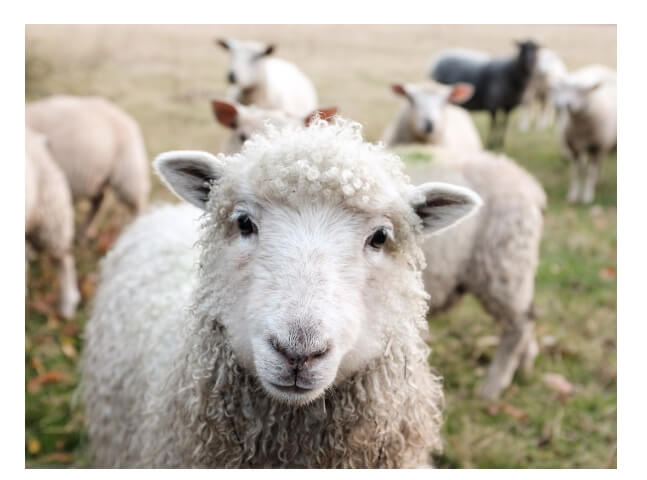





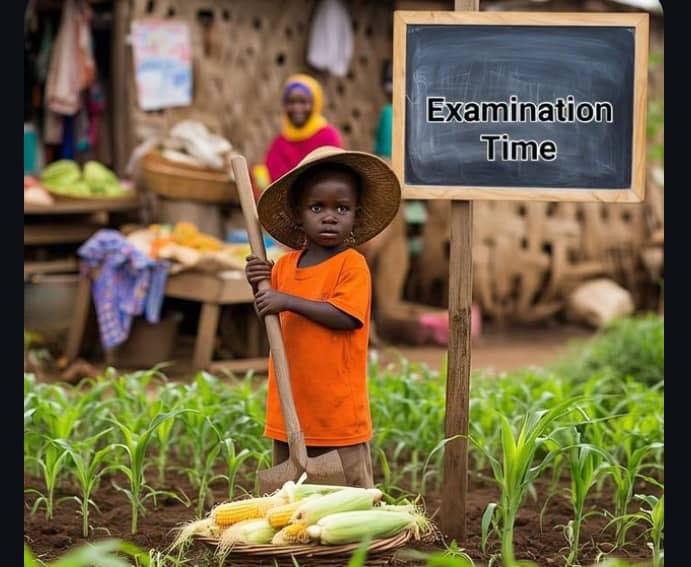
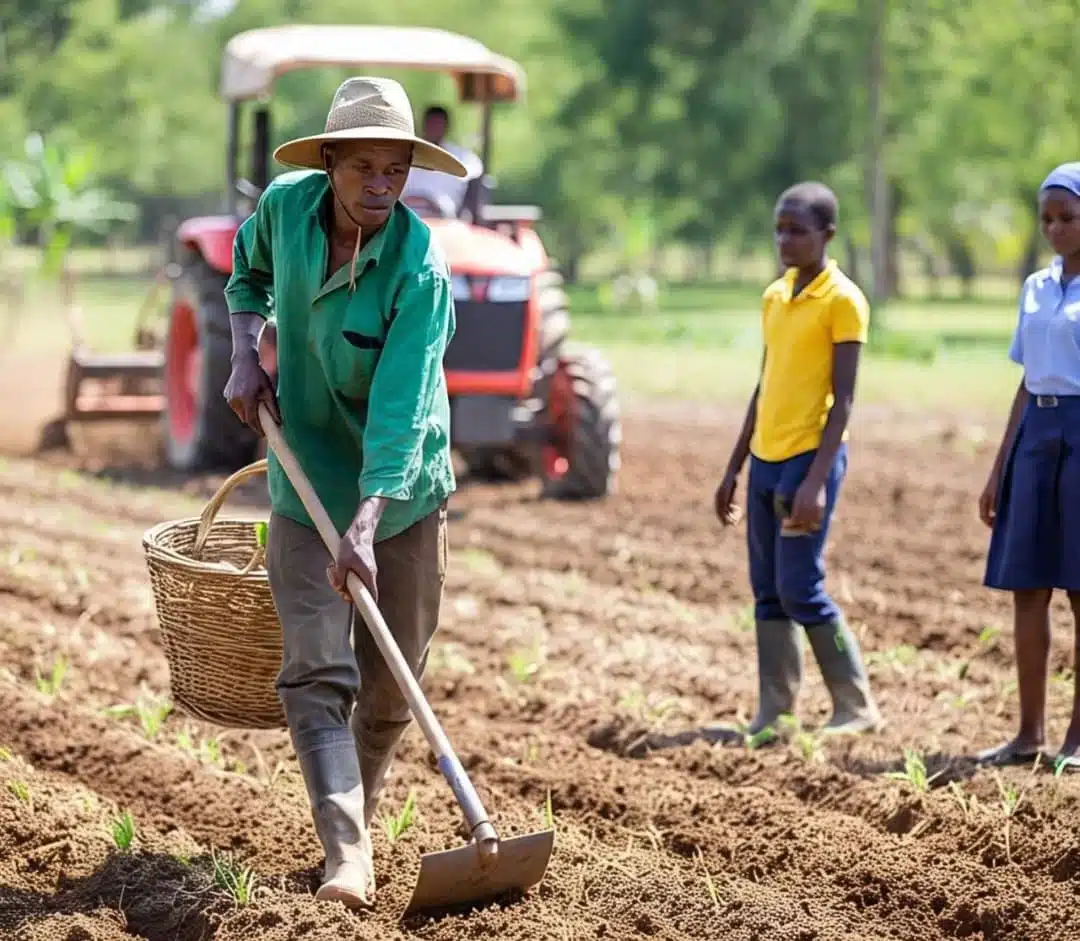
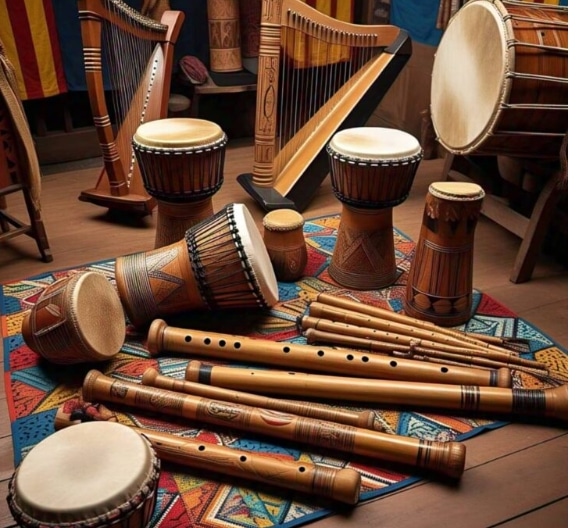
 Frequently Asked Questions (FAQs)
Frequently Asked Questions (FAQs)